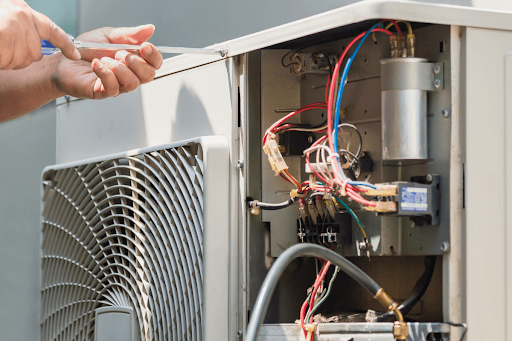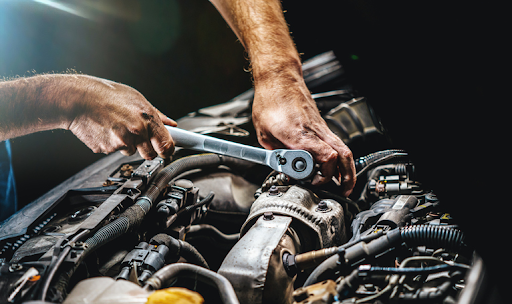Maximizing Comfort: Essential AC Services for Optimal Home Climate Control

Achieving a comfortable and consistent indoor climate is essential for maintaining a pleasant living environment. As temperatures rise, homeowners rely heavily on their air conditioning systems to provide relief and maintain a cool home. However, ensuring that your air conditioner operates efficiently requires more than just switching it on. Regular maintenance, timely repairs, and professional installation services are critical for maximizing your system’s performance and longevity. This article explores the importance of air conditioning (AC) services, focusing on essential areas such as AC repair and AC installation, and how they contribute to optimal home climate control.
The Importance of Professional AC Services
Air conditioning systems are complex machines that require proper care to function at their best. Routine servicing not only helps extend the lifespan of the unit but also ensures efficient energy use, reducing utility costs over time. Professional AC services encompass a range of activities, including routine inspections, cleaning, repair, and installation of new systems. When executed by certified technicians, these services help homeowners maintain a comfortable living environment and prevent costly breakdowns during peak seasons.
Let’s dive deeper into two of the most critical AC services: AC repair and AC installation.
AC Repair: Restoring Functionality and Efficiency
Even the most reliable air conditioning systems are subject to wear and tear over time, leading to potential malfunctions. These issues can significantly impact the unit’s ability to cool your home, often resulting in uneven temperatures, excessive noise, or even complete system failure. Timely ac repair services are essential to address such problems before they escalate into more costly or irreparable damage.
Common AC issues that require repair include:
- Refrigerant Leaks: A leak in the refrigerant line can compromise the cooling efficiency of your system. Repairing this issue promptly prevents further damage to the compressor and restores the system’s cooling capacity.
- Clogged Filters: Dirty or clogged air filters can reduce airflow, causing the system to work harder and consume more energy. Cleaning or replacing filters as part of a repair service improves air quality and system efficiency.
- Frozen Evaporator Coils: When evaporator coils freeze, the AC system struggles to absorb heat, leading to insufficient cooling. Repairing the coils helps the system regain its cooling power.
- Electrical Problems: Faulty wiring or worn-out electrical components can cause frequent system shutdowns or inconsistent performance. An experienced technician can identify and repair these issues to restore reliable operation.
- Thermostat Malfunctions: A malfunctioning thermostat can lead to improper temperature regulation, making your home too hot or too cold. Repairing or replacing the thermostat ensures consistent climate control.
Scheduling regular AC repairs as soon as an issue is detected can save homeowners from sudden breakdowns and high energy bills. Additionally, prompt repairs maintain the unit’s efficiency, ensuring it operates at its full capacity during the hottest months.
AC Installation: Laying the Foundation for Efficient Cooling
Proper ac installation is a critical step in ensuring the long-term performance and efficiency of your air conditioning system. Whether you’re replacing an old unit or installing a brand-new system, professional installation is essential for setting the foundation of your home’s climate control.
Several factors influence the success of an AC installation:
- Correct Sizing: One of the most important considerations during AC installation is ensuring that the unit is properly sized for the home. An undersized unit will struggle to cool the space, leading to overworking and frequent breakdowns. Conversely, an oversized unit will cool the space too quickly, causing it to cycle on and off more frequently, which can lead to higher energy costs and excess wear on the system.
- Ductwork Design and Sealing: Ducts play a crucial role in distributing cool air throughout the home. During installation, it’s important that ductwork is designed correctly and sealed properly to prevent air leaks. Poor ductwork can result in uneven cooling and decreased system efficiency.
- Placement of the Unit: The location of both the indoor and outdoor units impacts the system’s performance. Proper placement during installation ensures optimal airflow, reduces noise, and prevents premature wear caused by environmental factors.
- Energy Efficiency Considerations: Modern AC systems are designed with energy efficiency in mind. When installing a new unit, homeowners should consider the SEER (Seasonal Energy Efficiency Ratio) rating of the system. A higher SEER rating indicates better energy efficiency, which translates into lower energy bills and reduced environmental impact.
- Warranty and Maintenance Plans: A professional AC installation often comes with warranties and the option to enroll in maintenance plans. These plans provide ongoing inspections and tune-ups to ensure the system remains in optimal condition throughout its lifespan.
Investing in professional AC installation ensures that the system functions efficiently from the start, minimizing the likelihood of future repairs and maximizing comfort and energy savings.
Maintaining Optimal Home Climate Control
Beyond repair and installation, homeowners can take several additional steps to maintain optimal climate control:
- Regular Maintenance: Scheduling regular maintenance helps to identify and address minor issues before they turn into major problems. Professional tune-ups include tasks such as inspecting refrigerant levels, cleaning coils, and checking electrical connections.
- Thermostat Upgrades: Smart thermostats allow homeowners to control their home’s temperature remotely, optimizing energy use and enhancing comfort.
- Insulation Improvements: Proper insulation in the walls and attic can reduce the load on the AC system, leading to more efficient cooling and consistent indoor temperatures.
- Sealing Air Leaks: Ensuring windows and doors are sealed properly prevents cool air from escaping and warm air from entering, improving the system’s overall efficiency.
Conclusion
Maintaining a comfortable and energy-efficient home requires the right combination of AC repair, AC installation, and ongoing maintenance. Whether you’re addressing system issues, installing a new unit, or taking preventive measures, professional AC services are essential for ensuring long-term performance and optimal climate control. By investing in these services, homeowners can enjoy a consistently cool and comfortable living space while also minimizing energy consumption and avoiding costly breakdowns.






